Artificial intelligence is no longer an emerging technology that marketing leaders can monitor from a safe distance. It's become a non-negotiable component of competitive strategy. The question facing B2C brands today isn't if they should deploy AI — it's how to do it in a way that creates durable value rather than destroys it.
We surveyed hundreds of marketing leaders across B2C industries to understand how organisations are navigating this transformation. What we uncovered reveals critical strategic decisions, hidden risks, and significant opportunities that will separate the winners from the cautionary tales.
Here's what we found about the current state of AI in B2C marketing, and why many organisations are getting it wrong.

Landscape of Urgent AI Ambition is Driving Widespread Adoption
The research paints a stark picture: the market is moving at unprecedented speed, driven by intense competitive pressure and the belief that the next 12 months will determine who leads and who follows. But this urgency is creating dangerous blind spots. Success should be defined less by the pace of adoption and more by the wisdom of its application, particularly when it comes to the customer experience.
The data tells a clear story about the intensity of this moment:

Unwavering commitment to increased investment
The commitment to AI? It's essentially unanimous. A commanding 90% of B2C marketing organisations are ramping up their AI investment over the next 12 months. Only 1% plan to pull back, which tells you everything about where the market thinks this is heading.
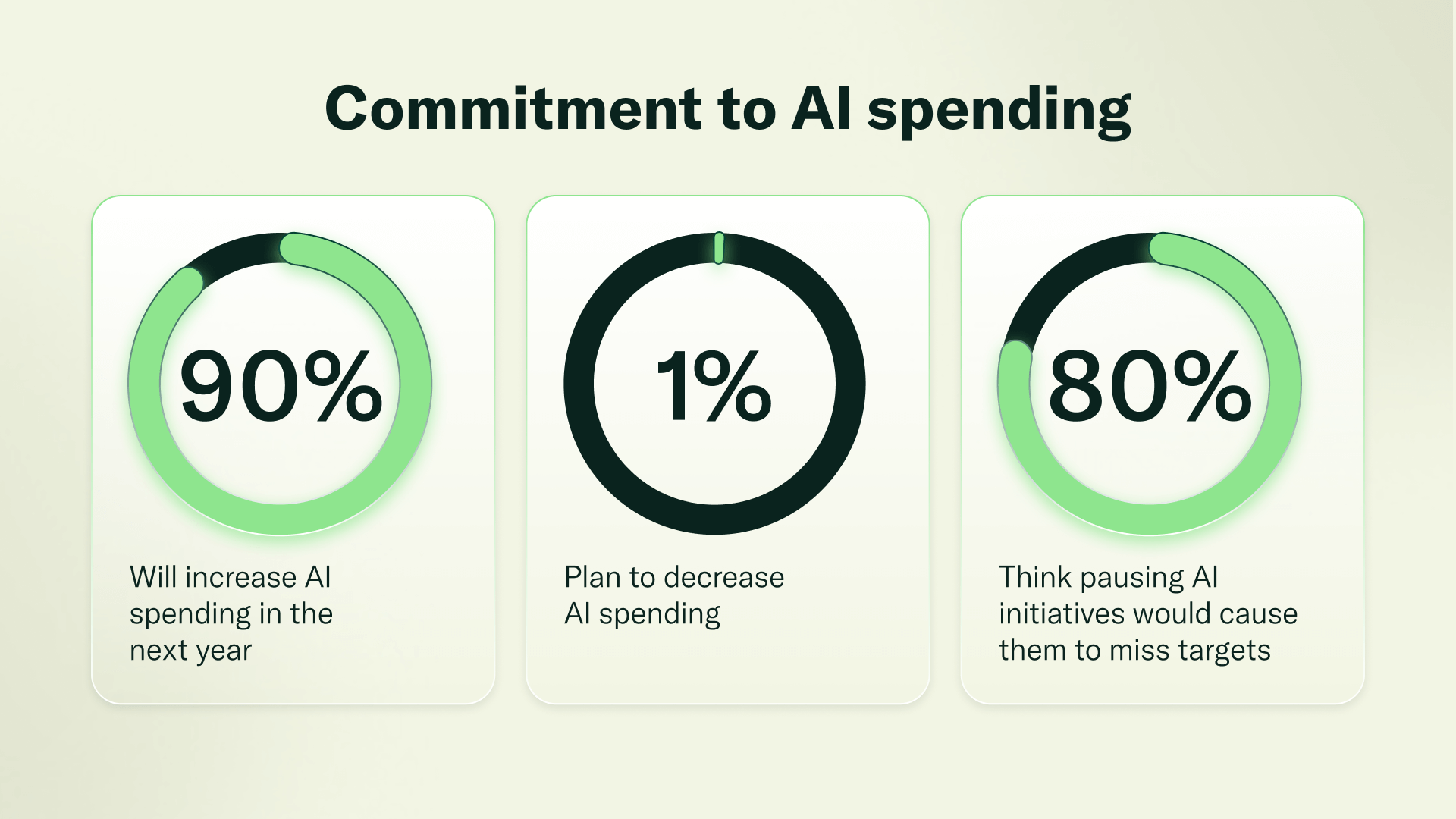
But here's where things get a bit strange. An overwhelming 80% of marketers believe that hitting pause on AI for just 12 months would blow their 2026 targets.
Yet this "do-or-die" urgency isn't always showing up in the budgets. Most organisations are allocating less than a quarter of their Martech spend to AI, with few dedicating more than half to these supposedly critical tools. There's a disconnect here, and you can dig into what's driving it in the full report.

The pilot phase is over
This supreme confidence is showing up in how organisations are actually operating. The days of cautious AI experimentation? They're over.

The numbers tell the story: only 15% of organisations are still in "watchful" pilot mode. The rest have made their move — 58% are going "fast but controlled," and another 25% are flat-out sprinting to grab competitive advantage, risks be damned.
This aggressive, confident stance is directly shaping how organisations are thinking about the risks of moving this fast.
AI Ambition Drives Overconfidence and a “Speed at All Costs” Attitude
But here's where things get really interesting—and dangerous. This collective rush has created a mathematical impossibility, as 82% of marketers believe they're adopting AI faster than their peers.
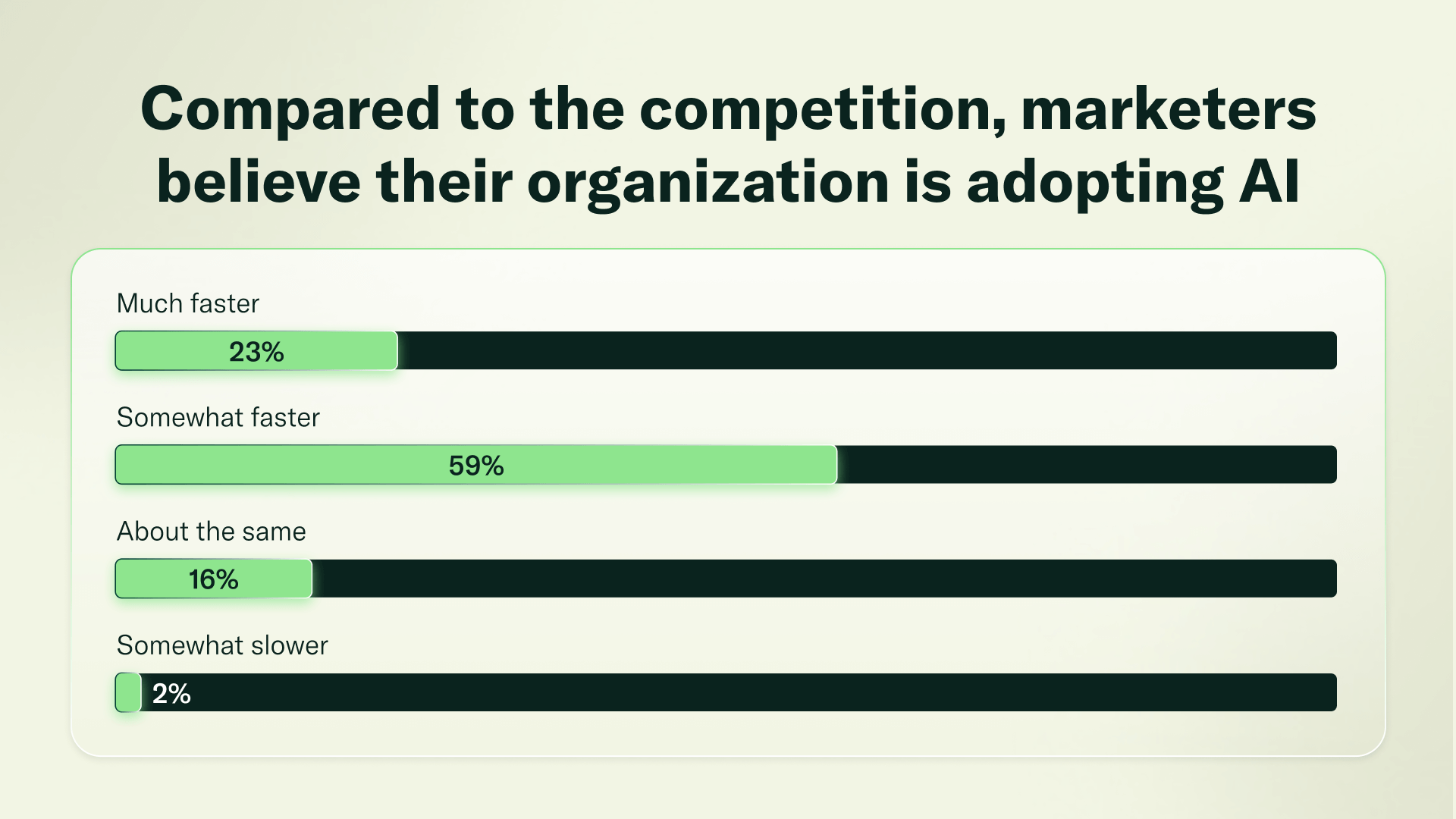
Let that sink in. If everyone thinks they're ahead, most are deluding themselves about where they actually stand. This kind of overconfidence? It's not a statistical quirk; it's a systemic vulnerability that's causing the entire market to tolerate way more risk than they should.
The question isn't whether to adopt AI. The question is whether you're deploying it in a way that actually creates value or just creates the illusion of progress.
The Strategic Gamble on Speed over Customer Experience
Here's where things get uncomfortable.
Faced with the choice between protecting customer experience and losing competitive ground, most marketing leaders are making a calculated decision: they're choosing speed over safety. Nearly 60% of marketers would rather risk harming the customer experience than lose the AI race to competitors.
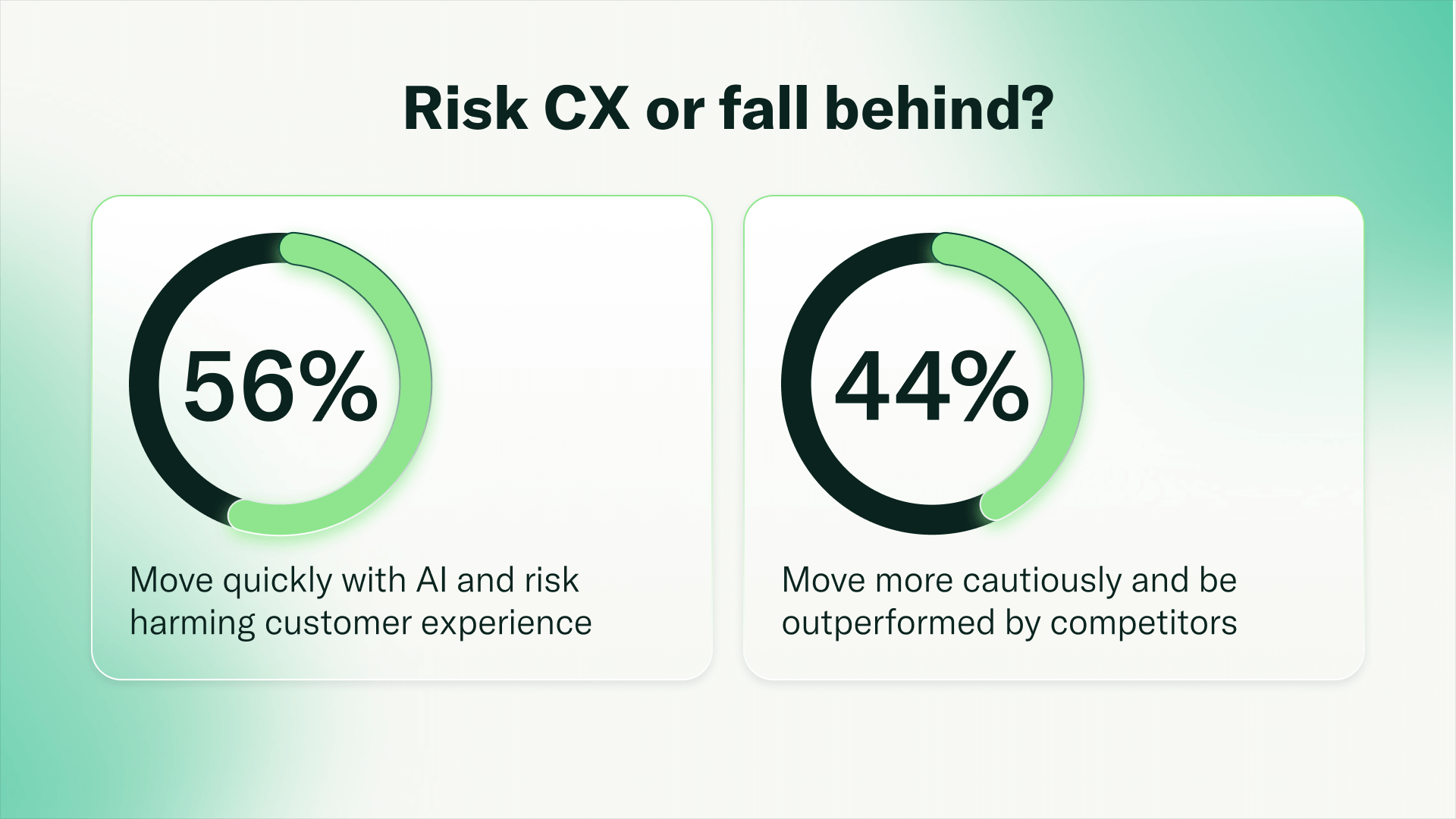
This isn't recklessness born of ignorance. It's a deliberate strategic calculation. Leaders are caught between two sets of existential risks, and they're making conscious trade-offs about which dangers to accept. But here's the paradox that should concern every executive reading this: 74% of marketers agree that rushing AI deployment can harm customer experience, yet 84% are confident they can scale AI quickly without causing that harm.
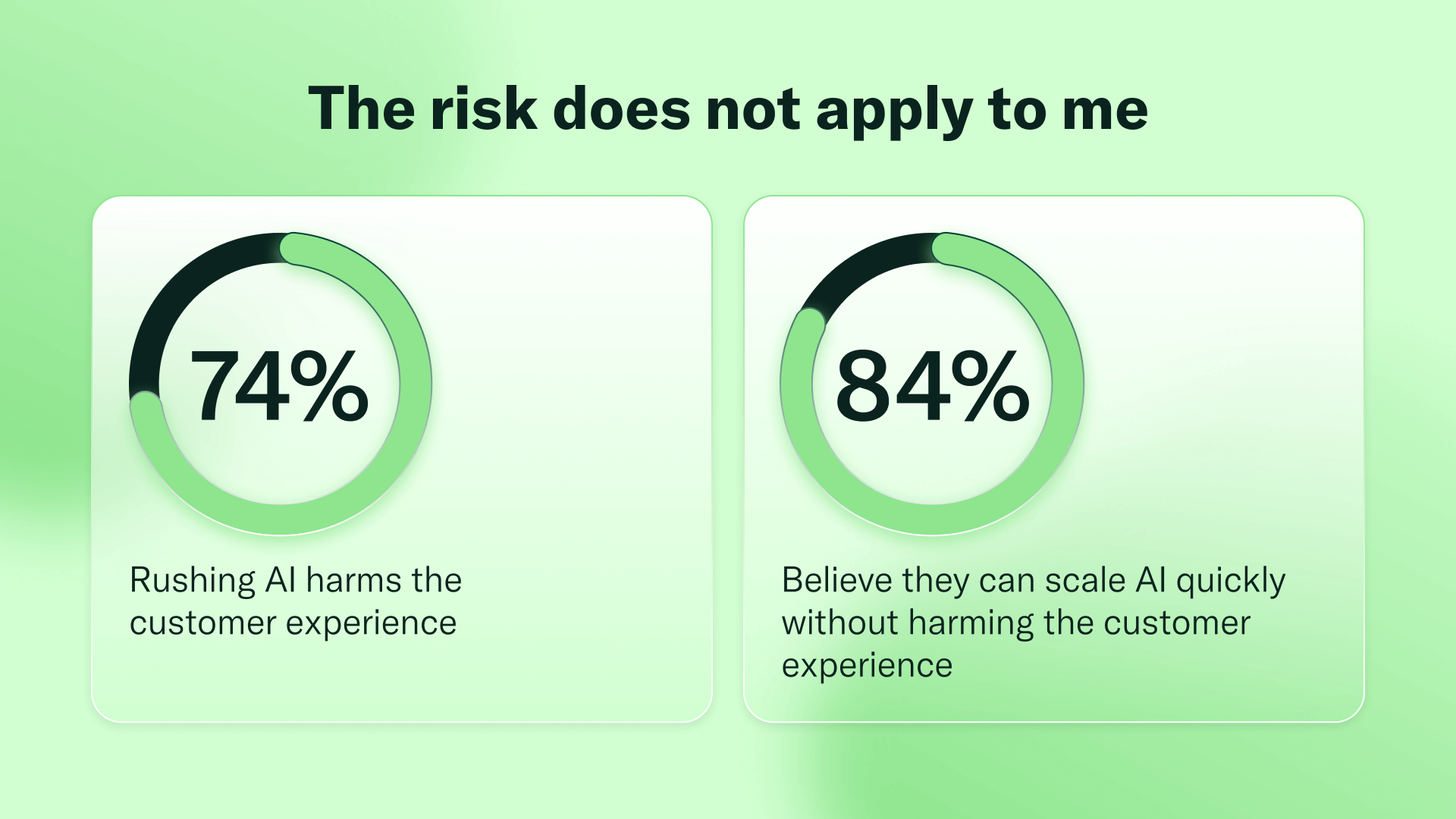
This is the confidence gap in action. Leaders acknowledge the danger in theory while simultaneously believing they're immune to it in practice. It's the organisational equivalent of "everyone is a bad driver but me."
The stakes of getting this wrong aren't just about customer satisfaction scores. They're about brand equity, customer lifetime value, and the durability of your competitive position. Because while you're racing ahead with your AI deployment, your customers are forming opinions about what that experience actually feels like.
And those opinions? They're dramatically different from what you think they are. It’s eye-opening to compare what marketers think about their customers’ AI experiences with what consumers actually experience. You can learn more about that in the full report.
Gaps in Application and Insight Activation are the Operational Reality
So why is there such a massive gap between what marketers intend and what they're actually achieving? The answer isn't about strategy, it's about execution. Most organisations are unintentionally sabotaging their own AI initiatives through two critical failures in how they activate data.
Missing Signal: The Richest Data Source You're Ignoring
When we asked marketing leaders which data sources they're actively mining to train and improve their AI, we found a revealing pattern:
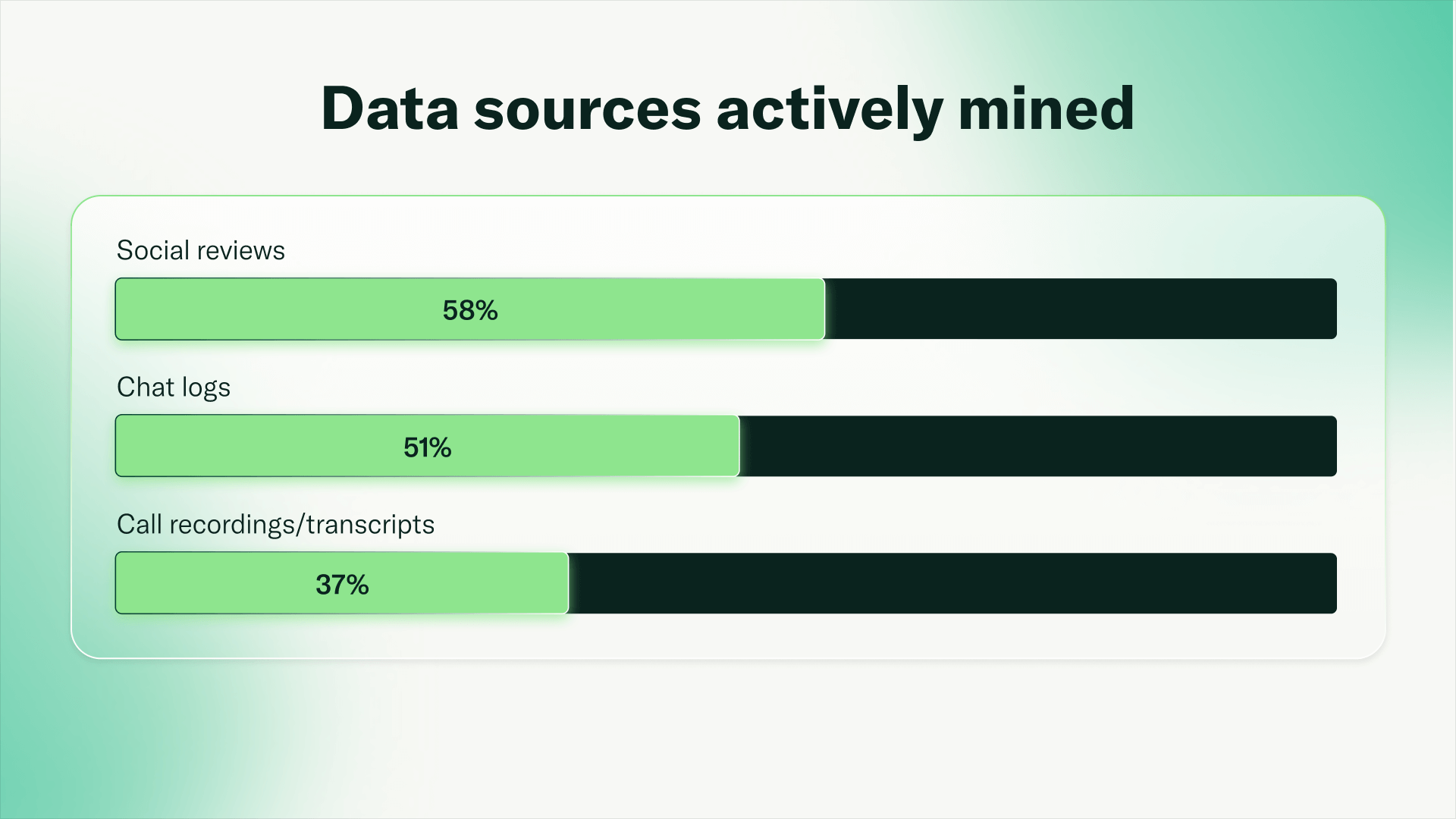
That last line is the problem. Phone conversations contain the most unfiltered, authentic voice-of-customer data available. These are moments when customers reveal their true intent, their real frustrations, and their actual needs, without the filters of typed chat or the performance of social reviews.
Yet, only 37% of organisations systematically mine this data to improve their AI or ad performance. The very data source that could close the perception gap is the one being most ignored.
The Latency Tax Starves Your AI of What it Needs Most
Even when organisations collect valuable data, they often fail to activate it quickly enough to make a difference.
Here's the problem: only 21% of organisations are feeding offline conversion data back to their ad platforms in near real-time. The rest? They're using daily batch uploads (58%) or weekly and monthly updates (20%).

Think about what this means: you're investing heavily in AI-powered advertising platforms that promise to optimise in real-time, then feeding them stale data that's days or weeks old. You're essentially buying a race car and filling it with regular unleaded.
This latency problem extends beyond advertising. When we asked marketers how quickly they could turn a new insight from unstructured data into a live campaign change, only 2% said "same day." Three-quarters need between two and seven days to react.
Think about what's happening here: You're operating in an AI-driven world where your competitors' systems can adapt in minutes. But your organisation needs 2-7 days just to react. You're not just slow, you're creating a new kind of leak in your marketing funnel. Not in acquisition. Not in conversion. In organizational agility itself.
What This Means for You
Now you're probably asking yourself an uncomfortable question: "Is my organisation one of the 82% who think they're ahead but actually aren't?"
Here's how to know:
You're in trouble if:
- Your AI strategy is primarily driven by competitive fear rather than customer insight
- You're measuring AI success through internal metrics without validating against actual customer experience
- You can't systematically analyse your call center or business location conversations
Your offline conversion data takes more than 24 hours to reach your ad platforms - You can't turn a customer insight into a campaign change in under 48 hours
You're on the right track if:
- You're prioritising operational excellence in data activation over speed of deployment
- You have real-time feedback loops that connect customer interaction data to your AI training
- You're willing to slow down or pause initiatives that aren't meeting customer experience standards
- You're mining conversational data from phone calls
The question isn't whether or not AI will transform B2C marketing. It will. The question is whether you'll be one of the organisations that transforms it successfully—or one of the cautionary tales about what happens when speed outpaces strategy.
Get the Full Report
This blog only scratches the surface of what we found in our comprehensive research. The complete AI Impact Report includes:
- Detailed breakdowns of AI adoption strategies
- Deep-dive analysis of where AI is succeeding (and failing) across the customer journey
- Operational benchmarks for data activation and insight-to-impact timelines
- Strategic frameworks for building AI initiatives that actually improve customer experience
- Recommendations for closing the perception gap in your organisation
Download the full AI Impact Report here. Industry reports for automotive, healthcare, home services, financial services & insurance, telecommunications, and travel and hospitality are also available.


